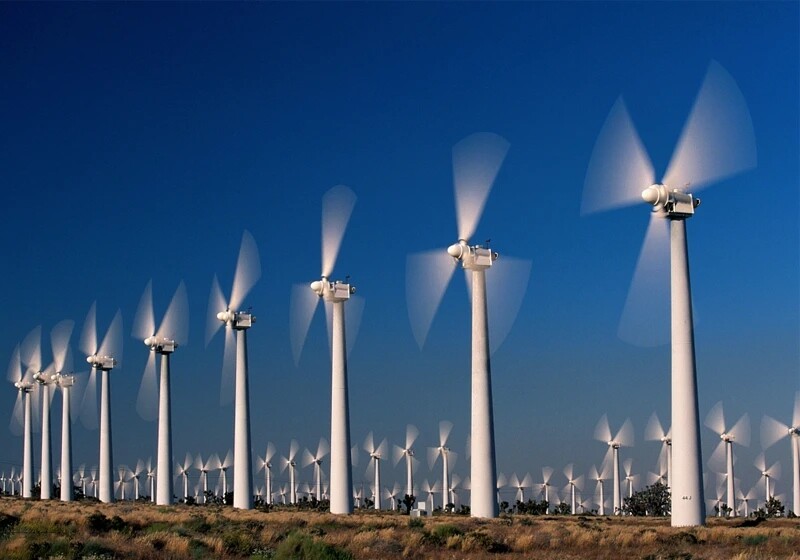Email format error
Email cannot be empty
Email already exists
6-20 characters(letters plus numbers only)
The password is inconsistent
Email format error
Email cannot be empty
Email does not exist
6-20 characters(letters plus numbers only)
The password is inconsistent


Exploring the World of Wind Power Manufacturers
In our quest for renewable energy sources, wind power has emerged as a leading contender, offering a sustainable alternative to traditional fossil fuels. At the heart of this transformation are wind power manufacturers, who design and build the turbines that harness wind energy and convert it into electricity. This blog delves into the world of wind power manufacturers, showcasing their innovations, challenges, and pivotal role in shaping our green energy future.
The Evolution of Wind Power
Wind power has evolved significantly from its early uses, where windmills were employed for tasks like grinding grain and pumping water. Today’s wind turbines are sophisticated machines engineered to capture wind energy efficiently and convert it into electrical power. Wind power manufacturers are instrumental in this evolution, continually advancing technology to enhance the efficiency and performance of wind turbines.
Key Innovations by Wind Power Manufacturers
Wind power manufacturers are at the forefront of several groundbreaking innovations aimed at optimizing wind turbine performance. These advancements not only improve energy output but also contribute to reducing the overall cost of wind energy.
Increased Turbine Size and Efficiency
One of the most notable trends in wind turbine technology is the development of larger turbines with extended blades. Larger turbines can capture more wind, resulting in increased electricity generation. This trend is driven by the need to maximize energy production while reducing the cost per megawatt-hour. The focus on larger, more efficient turbines reflects the industry's commitment to enhancing the viability of wind power as a primary energy source.
Advanced Materials and Engineering
The materials used in turbine construction have also evolved, with manufacturers incorporating advanced composites and lightweight materials. These innovations help create longer blades and more robust structures that can withstand harsh environmental conditions. Enhanced materials contribute to improved turbine durability and efficiency, which are crucial for maintaining performance over the lifespan of the equipment.
Smart Turbine Technology
Digitalization has brought about a revolution in wind turbine technology. Modern turbines are equipped with sensors and communication systems that enable real-time monitoring and data collection. This digital approach allows for predictive maintenance, performance optimization, and remote monitoring. By leveraging data analytics, manufacturers can enhance turbine reliability and operational efficiency.

Challenges for Wind Power Manufacturers
Despite the significant advancements, wind power manufacturers face several challenges that impact the industry’s growth and sustainability.
Cost and Investment
Developing and deploying advanced wind turbines involves substantial investment in research, development, and production. Balancing the cost of these innovations with their performance benefits is a continuous challenge for manufacturers. While larger and more efficient turbines promise greater energy output, they also require significant capital expenditure and ongoing maintenance.
Environmental and Sustainability Concerns
While wind power itself is environmentally friendly, the manufacturing and disposal of wind turbines can pose challenges. The production process involves resource extraction and energy consumption, while the end-of-life disposal of turbines requires careful management to minimize environmental impact. Manufacturers are increasingly focusing on sustainable practices, such as using recyclable materials and improving the efficiency of the production process.
Regulatory and Market Dynamics
Navigating the regulatory landscape is another challenge for wind power manufacturers. Policies and incentives for renewable energy vary across different regions, influencing the feasibility and profitability of wind projects. Manufacturers must stay informed about regulatory changes and adapt their strategies to align with local and global energy policies.
The Future of Wind Power Manufacturing
The future of wind power manufacturing is bright, with numerous opportunities for growth and innovation. As the global demand for renewable energy increases, wind power is expected to play a crucial role in meeting energy needs sustainably.
Offshore Wind Power
Offshore wind farms represent a significant growth area for the industry. The ability to harness strong and consistent winds over the ocean provides a substantial energy resource. Manufacturers are developing specialized turbines and technologies designed for offshore environments, paving the way for expanded wind power capacity.
Emerging Markets and Technological Advancements
Emerging markets, particularly in Asia, Africa, and South America, offer new opportunities for wind power expansion. These regions have abundant wind resources and are investing in renewable energy infrastructure. Additionally, ongoing technological advancements promise further improvements in turbine efficiency and cost-effectiveness, enhancing the overall viability of wind power.
The Economic Impact of Wind Power Manufacturing
Wind power manufacturing is not only crucial for advancing renewable energy but also has significant economic implications. The industry creates jobs, stimulates economic growth, and fosters technological advancements.
Job Creation
The wind power sector generates a wide range of employment opportunities, from engineering and manufacturing to installation and maintenance. As the industry expands, so does the demand for skilled workers. Jobs in wind power can offer competitive salaries and contribute to local economies, particularly in areas with wind farms or manufacturing facilities.
Economic Growth
Investments in wind power manufacturing contribute to economic growth by promoting technological innovation and infrastructure development. Wind farms and manufacturing plants stimulate local economies through construction projects, supply chain activities, and long-term operational spending. This economic activity supports businesses and communities, enhancing overall economic resilience.
Technological Advancements
The continuous innovation in wind turbine technology drives broader technological advancements. Many of the developments in wind power have applications beyond the energy sector, influencing areas such as materials science, digital technology, and environmental management. This cross-industry impact highlights the broader benefits of investing in wind power manufacturing.
Conclusion
Wind power manufacturers are pivotal in driving the global transition to renewable energy. Through continuous innovation and a commitment to overcoming challenges, they are shaping the future of wind energy. As the world moves towards a more sustainable energy landscape, the contributions of these manufacturers will be instrumental in advancing wind power and promoting a greener, cleaner planet for future generations.

